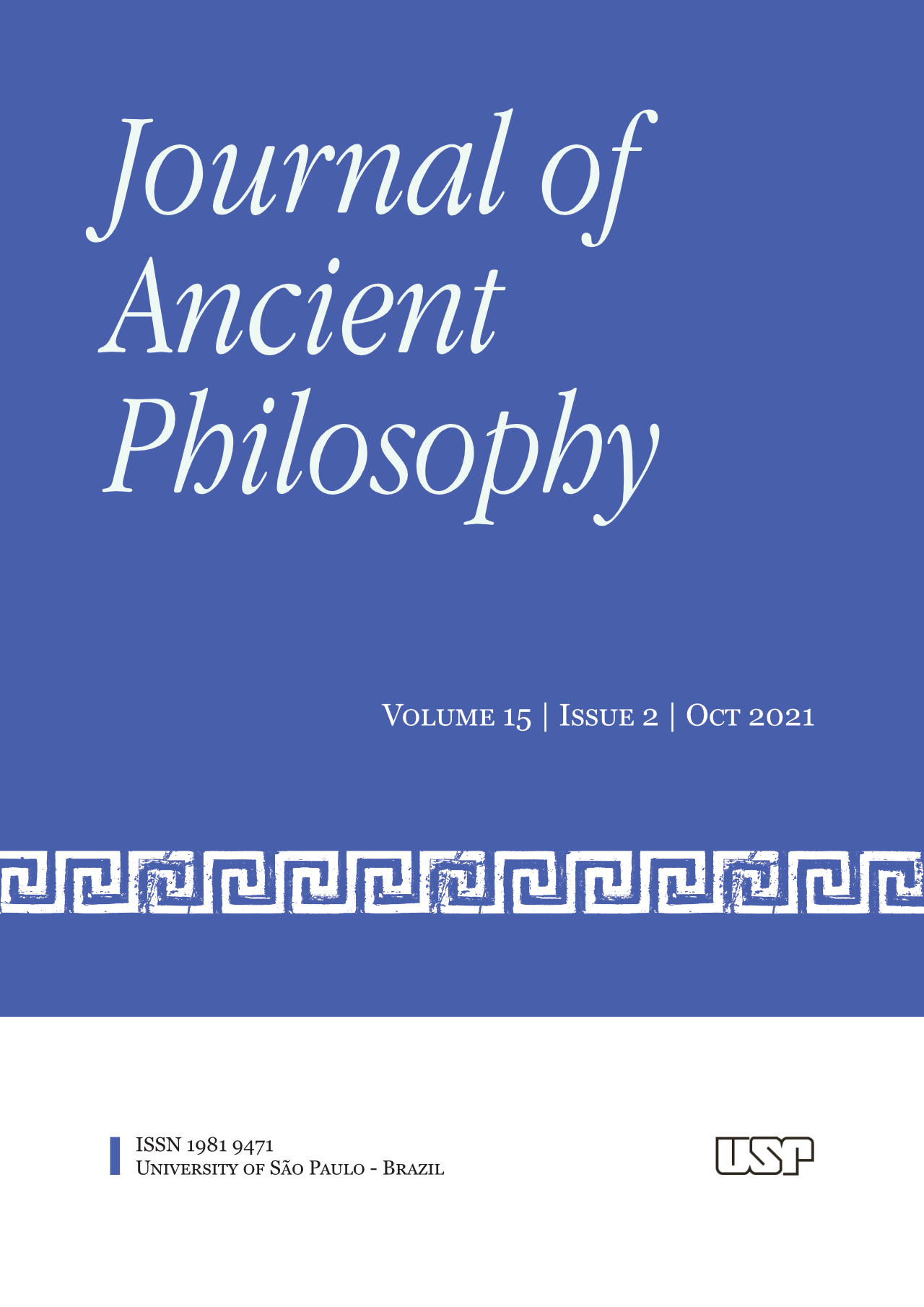Mysterious Bodies: Aristotelian Animal Generation and the Early Christian Doctrine of Bodily Resurrection
DOI:
https://doi.org/10.11606/issn.1981-9471.v15i2p139-169Abstract
How does a living body come to be? What happens when it passes away? Questions like these captivated both Aristotle and St. Paul, despite their significantly different times and cultures. While it does not make any claim that Paul explicitly relied on Aristotle, this article does argue that each of them faced down parallel dilemmas and responded with the same conceptual move. Writing on animal generation, Aristotle rejected theories which overemphasize continuity through the developmental process or so stress the intelligibility of discrete stages that the process itself disintegrates without coherence. Likewise, Paul, writing on the plausibility of bodily resurrection, exhorts the Christian community in Corinth to reject overly continuous caricatures of resurrection while also urging them not to abandon hope for the bodies of those who have died – “what you sow,” he tells them, “come[s] to life.” Both Paul and Aristotle point their readers toward accounts of bodily development which refuse to collapse into either identity with the past or discontinuity between past and future – Paul and Aristotle insist on both. Such insistence is plausible on each of their accounts because they advance a shared conceptual shift away from prioritizing the temporal order of bodily change and toward a teleological order which privileges a greater whole.
Downloads
References
Coogan, Michael. (ed.) (2010), The New Oxford Annotated Bible: New Revised Standard Version with the Apocrypha, 4th edition, New York: Oxford University Press.
Barnes, Jonathan. (1984) The Complete Works of Aristotle, 2 vols. (Princeton, NJ: Princeton University Press.
Chadwick, Henry (1965) Origen, Against Celsus 5.14, Cambridge: Cambridge University.
Daley, Brian. (2002) “A Hope for Worms: Early Christian Hope”, in Resurrection: Theological and Scientific Assessments, ed. Ted Peters et al, Eerdmans: Grand Rapids: 136–64,
Endsjø, Dag. (2008) “Immortal Bodies, Before Christ: Bodily Continuity in Ancient Greece and 1 Corinthians”, Journal for the Study of the New Testament 30.4: 417–36.
Ware, James (2008) “Paul’s Understanding of the Resurrection in 1 Cor 15:36–54”, Journal of Biblical Literature 133.4 [2014]: 809–35.
Steenberg, Matthew (2008) Irenaeus on Creation – The Cosmic Christ and the Saga of Redemption, Leiden: Brill, 2008.
Bynum, C. (1995) The Resurrection of the Body in Western Christianity, 200-1336. New York: Columbia University Press.
Gotthelf, Allan and Falcon, Andrea. (2018) “‘One Long Argument’? The Unity of Aristotle’s Generation of Animals”, in Aristotle’s Generation of Animals: A Critical Guide, ed. Andrea Falcon and David LeFebvre, Cambridge: Cambridge University Press: 15-34.
Kelsey, Sean (2015) “Empty Words,” in Theory and Practice in Aristotle’s Natural Science, ed. David Ebrey, Cambridge: Cambridge University Press: 199-216.
Preus, A. (1970) “Science and Philosophy in Aristotle’s Generation of Animals”, Journal of the History of Biology 3.1: 1-52
Lennox, James. (2017) “An Aristotelian Philosophy of Biology: Form, Function, and Development”, in Acta Philosophica 1 26: 33-52
Connell, S. (2016) Aristotle on Female Animals: A Study of the Generation of Animals. Cambridge: Cambridge University Press.
Bradie, Michael and Miller, Fred. (1984) “Teleology and Natural Necessity in Aristotle”, History of Philosophy Quarterly 1 2: 133-146)
Gotthelf, A. (1976) Aristotle’s Conception of Final Causality”, Review of Metaphysics 30.2: 226-254
Gutiérrez, Gustavo. (1984) We Drink from Our Own Wells: The Spiritual Journey of a People. Maryknoll, NY: Orbris.
Downloads
Published
Issue
Section
License

This work is licensed under a Creative Commons Attribution-NonCommercial 4.0 International License.
Copyright
Authors who publish with this journal agree to the following terms:
- Authors retain copyright and grant the journal right of first publication with the work simultaneously licensed under a Creative Commons Attribution License (CC By 4.0) that allows others to share the work with an acknowledgement of the work's authorship and initial publication in this journal.
- Authors are able to enter into separate, additional contractual arrangements for the non-exclusive distribution of the journal's published version of the work (e.g., post it to an institutional repository or publish it in a book), with an acknowledgement of its initial publication in this journal.
- Authors are permitted and encouraged to post their work online (e.g., in institutional repositories or on their website) prior to and during the submission process, as it can lead to productive exchanges, as well as earlier and greater citation of published work (See The Effect of Open Access).


